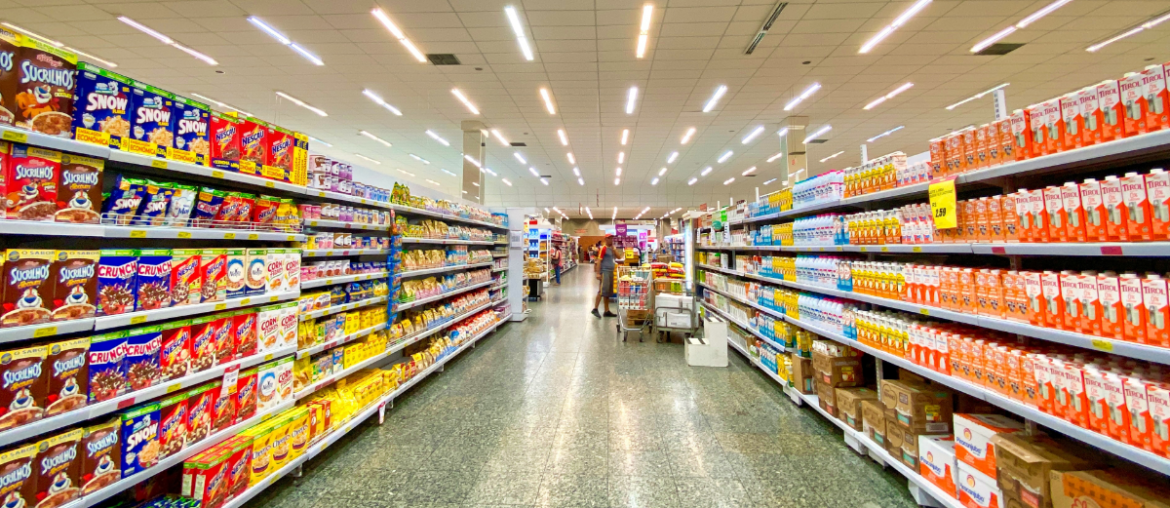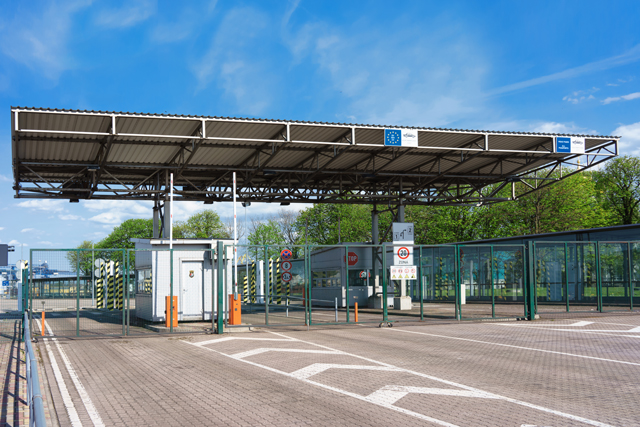Grocery shopping has changed significantly in recent years, as more consumers order their weekly shopping online for delivery. The grocery shopping and delivery business industry has struggled to some extent over the past year; new opportunities for online shopping and catering to customers have grown into a thriving success.
The onset of a global pandemic has shifted many grocery stores and related industries to change overnight, from offering delivery services as a side option to a mainstream choice. Within a short time frame, home delivery became fast and efficient with improved systems, local grocery delivery services, and prioritizing the experience for residents who rely on this business; grocery delivery.
- Things to Review Before You Begin Your Grocery Shopping and Delivery Service
- Create a Positive Virtual Shopping Experience for Customers
- Be Transparent and Provide as Many Details as Possible for Customers
- Transfer In-store Promotions to Online Grocery Delivery Platforms
- Making Delivery Fast and Efficient
- Offer Alternatives to Current Products
- Keep Your Customers Up to Date with Delivery Notifications
- Curbside Pickup Operations as an Option
- The Convenience of Online Grocery Shopping
- Other Streams of Income with Your Grocery Service
- Customer Feedback as a Valuable Tool for Business Improvement
- Connecting Customers with Their Favorite Stores and Vendors
- Summary
Things to Review Before You Begin Your Grocery Shopping and Delivery Service
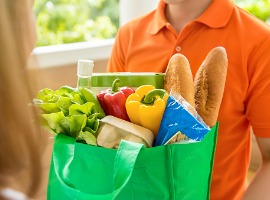
Before you start, as a business owner, it’s essential to consider all your options and needs to ensure a successful grocery delivery business. Many people are new to online grocery shopping, and getting accustomed to all the options and tools available can make the experience more enjoyable and more accessible than initially expected.
There’s good news for the online grocery shopping service industry: trends for growth are expected to continue well into the future, which means this business isn’t just a temporary solution for now, but a great way to manage grocery shopping needs for many years.
Due to the increased popularity of online grocery shopping, there is a lot of competition, making establishing a solid business model vital for your success.
What to Consider for your Grocery Delivery Services
Designing a successful business model requires a bit of research and analysis of your competitors. A quick online search is often the best way to get started, so you’ll have an idea of how many grocery delivery companies are operating, which areas they cover, and what types of groceries they offer. The following list of items is critical to consider when you’re building your company’s model:
Create a Business Model that Can be Adjusted
When you create your initial business model, consider the need for adjustments so that you can quickly shift priorities and adapt the model to match a growing industry with new ideas and innovative services for customers.
For example, suppose your business offers certain specialized grocery products or local farm-to-table services. In that case, you may want to capitalize on offering these options to attract new customers or retain current clients.
Get to Know Your Market
Targeting your market is most efficiently done if you know your customers. Does your grocery service model focus on catering to people who are physically unable to access in-store shopping, or is it a viable option for professionals, working people, and families?
Your market may be specific to one region or several areas, which may be urban, suburban, rural, or a combination of these areas. Knowing your target market means you can highlight specific items on your company’s website, which fit best within a specific demographic.
Work on an Operating Model
Within the framework of your business model, create a working model or strategy of how your company will operate. Consider all factors that contribute to your company’s efficiency, such as software, web-based platforms, mobile apps, and more. Analyze the tools used by competitors’ sites to determine what you’ll need to meet and exceed customers’ expectations and needs.
Grocery Website, Online Order Processing, and Mobile Apps
What types of payment options are offered on your company’s website, and how user-friendly is the mobile app? These are just samples of things to review when developing a website and mobile app for interaction with your customers.
Build a website that communicates clearly to customers so they don’t feel inundated by numerous options. Instead, they are welcome to view and read about available goods before committing to placing an order.
The Focus on Products and Store Options
When you review competing grocery shopping and delivery businesses, you’ll find a few various models that focus on different ways to shop and deliver your groceries. While many business models are similar, there are distinct differences in how they are set up, depending on their size, structure, and product offerings.
The Inventory Model
This model focuses on buying all the offered grocery items from a set number of suppliers stored in a climate-controlled facility until pickup or delivery. The suppliers partner with the company, responsible for monitoring inventory, and determining how many items are needed based on demand and the orders received.
This process is operated in a “just-in-time” method so that all items from the supplier are bought quickly, so they remain fresh when they are delivered to the customer.
Multiple Channels of Business
Large grocery delivery models may benefit from offering various tiers of service to customers and smaller businesses, including retail and wholesale divisions. These companies have developed multiple store locations (for in-store and distribution), storage facilities, and distribution centers. Curbside pickup, in-store pickup, and in-person shopping are other options offered alongside delivery services.
Inventory levels are carefully monitored to ensure sufficient stock of products within their respective categories for individuals and businesses.
Combination Model of Multiple Vendors and Product Options
Some companies have developed a hybrid model of grocery offerings, including warehouse storage and partnering with local grocery stores, which provides a much larger platform of specialized products for customers. Partnering with small grocery stores and specialty foods can offer a great option to customers who look forward to purchasing a specific food or condiment that’s not an option in other online grocery stores.
Starting a New Grocery Store Model
Reviewing all the options for building a successful business becomes very involving as you grow your business. In the beginning stages, it’s essential to focus on the base or foundation of services that focus on what customers need initially. For example, the pandemic created a situation where many people minimized in-store shopping or avoided it altogether.
The basics become the backbone of your business, which means people will look for their everyday grocery items and dietary staples first before they consider specialized foods and items. The grocery delivery industry has continued to grow exponentially over the past year and a half, with meal kits, fresh produce and meats from local markets, alcoholic beverages, and diet-specific meal plans.
Small businesses and local bakeries, butchers, and restaurants may also partner with grocery delivery services to prepare customer orders for prepared meals to enjoy at home.
Start Using RouteManager!
Create a Positive Virtual Shopping Experience for Customers

If you create a positive experience for your customers, there is a better chance they will return for additional online shopping. Many people trying to shop for groceries online for the first time may be apprehensive and concerned about the effect of this new delivery service on their budget. A user-friendly website is an excellent way to start a grocery delivery business and help people see how easy it is to shop for all their essential food items.
An online tutorial or step-by-step guide to help first-time shoppers can alleviate a lot of stress and encourage them to continue shopping with your delivery service. Transparency in prices, service fees, delivery charges, and other delivery fees, where applicable, helps indicate how affordable certain products and services are so that each individual can make an informed decision.
It’s critical to remember that many customers used this service for the first time during the pandemic and may not have considered it an option otherwise. Consider the types of concerns your customers may have, and address them beforehand so that their experience is relaxed and pleasant every time.
Creating an online environment that caters to their personalized needs and shopping makes a significant difference in how likely they will return to use the service again and how often.
Be Transparent and Provide as Many Details as Possible for Customers

Customers want to make an informed decision when they shop, and online delivery may feel as though they’re not in complete control as if they are physically inside a store. Many people want to know all the nutritional facts, package dimensions, and portions of their food products. They may decide to choose specific fruits and vegetables or require more educational details about each product before buying.
When your grocery shopping and delivery business offers messages that indicate whether it’s organic, high in fiber and specific nutrients, and/or vegan or gluten-free, it not only informs customers about the attributes of a specific product but the personality of a brand and its features. Some grocery stores highlight specials and local goods as primary features for customers who prefer to shop for more sustainable goods and services.
Helpful Details on Products, Brands, and Promotions on Your Website
There are many ways to make navigation through your website easy for the customer, supplier, merchant, and other parties who have various access levels for specific functions. For example, the delivery staff may have a separate portal or area of the website to access upcoming deliveries, with the option to accept or reject an order based on their availability.
Sellers can access the system to view delivery schedules, product availability, and other vital information they need to review and update according to their product offerings. They can also access sales reports, manage their online “store”, and manage all orders, cancellations, and modifications.
Similarly, your company’s staff can access sales and activity reports, tax management resources, inventory and product review and approval systems, and other valuable information that contributes to making important business decisions and changes, as needed.
For example, a famous brand or line of products could quickly expand into a featured special or promotional event to continue enjoying the success of high demand and revenue from this line of goods. Website design is easy to customize for all users and access levels to maximize your earning potential while providing all the vital tools and resources to everyone using the platform.
Transfer In-store Promotions to Online Grocery Delivery Platforms

To introduce and start grocery delivery service platforms for shopping, it’s essential to transfer all the items that would generally be in-store to the website. As soon as the customer logs in or visits the grocery shopping and delivery business’ home page, a banner of current sales, specials, and discounts is ideal. They’ll quickly recognize the familiar flyer style of each ad or promotion, and it will offer a sense of comfort and ease as they place their first grocery delivery order.
Making Delivery Fast and Efficient
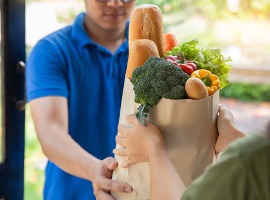
One of the top ways to develop a grocery delivery business opportunity is to make the process as easy, familiar, and efficient as possible. As many people enjoy quick shopping in-store, with little or no delays, the online platform should similarly include ways to optimize delivery times with no delay to satisfy this same expectation.
Some essential factors to implement into your grocery shopping and service model, help create a seamless experience from selecting the products, shopping for them, and delivery. Routing is a vital part of increasing efficiency, especially in large urban areas with many customers and delivery routes.
Each delivery person can be assigned specific areas to ensure they can schedule the grocery shopping and delivery within a short time frame. Consider all the key elements that can impact the shopping experience, contribute to delays or errors in selecting products, and ensure the customers’ needs are prioritized and receive precisely what they want and within the specified time.
The cost of fuel, the number of trips, driving time, anticipated traffic delays, and other factors should always be considered so that your business can develop contingency plans in the event of unforeseen incidents and the high demands of this growing business.
All Your Grocery Delivery Business’ Needs in one App
Create a contingency plan for last-minute changes and re-routing orders with a convenient, easy-to-use Driver Mobile App for drivers. This essential tool helps assign delivery routes to drivers several days in advance to plan their schedule accordingly, which includes picking up packages, and scanning each order to update the software, which can alert customers to the delivery status.
Scheduling driving routes and deliveries in advance allows for modifications to be made well before their delivery so that a last-minute cancellation or unavailable driver can quickly be offered or assigned to a backup driver. This dispatching service keeps track of every step of the process, from finding a local driver to pick up the goods to scanning the grocery package and scheduling a delivery time.
Optimizing the route with the shopper and delivery time makes the whole process much easier for customers’ expectations while simplifying the experience from start to finish and the expected delivery time. Route planning technology is an innovative way to always keep one step ahead of the competition while ensuring all deliveries are made as efficiently as possible.
Offer Alternatives to Current Products
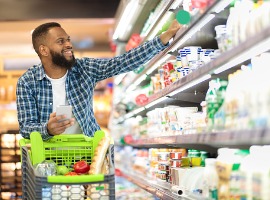
If a product is unexpectedly out of stock, and this is not reflected on the website, there may be some frustration on the part of the customer and the shopper. It’s important to anticipate that certain grocery items may disappear off the shelves or in the produce section quickly, especially if they are on sale and in demand.
One option to curb the possibility of dissatisfaction is to offer alternative products and/or stores to buy them from, which may cost a bit extra, depending on fuel and distance. Anticipating this possibility, especially at peak shopping hours, is a helpful tool to give your customers greater control over their grocery selection.
Many people will quickly search for an alternative in a store setting if their current brand or food item is not available. Alternatively, you can offer customers the option of buying more of one item or another (already on their shopping list) if the requested food isn’t in stock.
A delivery management platform can offer customers alternative shops and stores that may feature what they’re looking for instead of their usual grocer and offers them more significant opportunities to shop in more than one place.
Keep Your Customers Up to Date with Delivery Notifications

Like food delivery service apps, grocery service delivery requires continuous communication with customers to know when to expect their groceries. If planning the complexities of grocery delivery routes is too much, especially for a growing grocery service business, allow a routing algorithm to do all the heavy lifting for your business and get the most out of the results.
Time constraints and managing all the areas of an expanding business means that implementing software that calculates the best routes and manages delivery times and shopping options is ideal. You can also implement notification tools to alert customers when their shoppers choose their items when the delivery truck is dispatched, and approximately when their groceries will be delivered.
The cost of installing a notification system along with an automated delivery platform may be more than expected. However, it’s a substantial investment to ensure continuous success and growth for grocery and delivery services.
In the long term, it allows for greater control over more shoppers, and delivery drivers and mapping out routes that include a specific area of grocery stores and specialty foods, depending on the demand and scope of products and services your company offers.
Curbside Pickup Operations as an Option
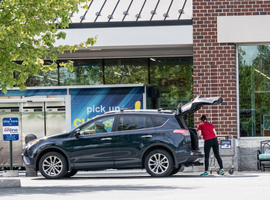
In some areas, curbside pickup is an excellent alternative to delivery, especially where customers frequently drive past specific grocery stores and areas that make pickup easy and effortless. A separate area of the small facility that keeps groceries refrigerated and ready to go is ideal as a drive-through service. Payment for grocery purchases can be processed online or over the phone before pick up.
The curbside pickup experience is best when it’s flexible, with an “open window” of time that allows customers to quickly arrive and pick up their goods with a code or confirmation to identify their order. This allows for fast, contactless pickup that’s safe while avoiding potential delays that may occur with deliveries.
The Convenience of Online Grocery Shopping
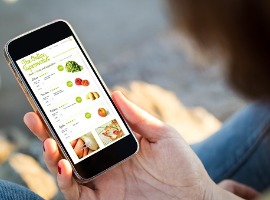
As new customers try online grocery shopping for the first time, they quickly realize how quick and easy it is to use, and it soon becomes a regular option for more people over time. For this reason, in addition to the necessity to adhere to social distancing and stay safe currently, many people find grocery shopping online far more convenient and flexible than making in-store purchases.
While the idea of online shopping may seem like a current trend for grocery shopping to replace the in-store experience, there are a growing number of statistics that indicate online grocery shopping is here to stay and will likely continuously increase over time.
Ordering your weekly grocery items online allows more time to complete other tasks and errands, which soon becomes a viable option for more people with busy work schedules and commitments.
Many people plan to continue their grocery shopping experience online, eliminating the need to search for products that may no longer be available in their local store. They no longer have to wait in long line-ups at stores and visit more than one location to find a specific product or brand.
Other Streams of Income with Your Grocery Service
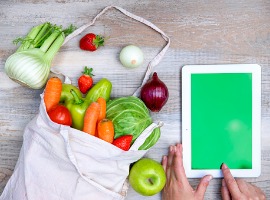
In addition to the primary service of shopping and delivery of grocery goods to your customer base, there are other ways to earn revenue through your growing business. When you build an online grocery service platform, your suppliers and partners may offer incentives for promoting specials and discounts on your site, in addition to other creative and helpful ways to increase profit.
Add a Blog to Your Website
Do you have recipes or nutritional information that may help promote a specific brand or product? Many companies create blogs integrated directly into the website or as a separate link and website, where further promotions and banner ads can create additional revenue streams. A blog is a fun way to include lots of new ways to create meals and enjoy pairing certain foods and beverages, among other discussion-worthy items.
A partner company may have information for your blog or website, which helps promote their line of products or brands and creates an incentive to pay discounts when filling orders. Once you establish a blog with a solid following, you can post sponsored posts and ads to generate additional income for your business.
Hosting Banner Ads and On-site Promotion for Specific Grocers and Merchants
Many small grocers and emerging merchants appreciate the opportunity to display their promotions and specials on your website. By showcasing your suppliers’ featured products, you’ll receive an incentive payment and other benefits for promoting your business. Hosting a banner ad or featured product at a local grocery store or specialized food shop will benefit their business and yours in the interim and long term.
Expand your platform to invite suppliers and partners, and highlight at least one product or brand each week, so that customers and merchants reap the benefits of these promotions, sales, and savings often.
Promoting Your Grocery Service on Grocery Merchants’ Websites
You may want to consider featuring a banner ad on one of your merchants’ sites if they have a solid platform and are new to offering grocery delivery and curbside pickup services, in addition to traditional in-store shopping as an option for customers.
You might use a catchphrase or offer to promote delivery services on a local grocer’s website or inside the physical store. An online banner might say “Get your groceries delivered right to your door” or specific discounts or sign-up specials offered by your company, such as “Free delivery of your weekly groceries, with no fees on the first order.”
Sell Merchandise from Merchants and Suppliers
Do your suppliers and partners carry a specific brand or specialize in unique local goods? They may consider promoting merchandise for regular consumers, which may also be featured on your grocery service website. When you include the ordering of brand or store-specific merchandise on your website, you’ll have the benefits of earning more from these sales while enjoying solid relationships with these suppliers.
There are some great opportunities to expand your business by including merchandise from suppliers, which may include coffee mugs, water bottles, t-shirts, reusable shopping bags, and more.
Selling Data on Consumer Trends for your Company to Research Firms
Market research is a critical way to understand what consumers want and which products, services, or brands are trending. When you contribute to this valuable field of study, market research firms offer payment for this data, which offers vital statistics and feedback on how the grocery delivery industry works, and which products are the best to promote for improved success.
Customer Feedback as a Valuable Tool for Business Improvement

When you encourage regular feedback from customers, you’ll learn a lot about what people are looking for in a business, what they enjoy about your service, and where improvements can be made now and in the future. Various types of feedback are invaluable, and asking for a customer’s review and rating of your company is essential for several reasons:
- Customers often feel empowered when they provide feedback, significantly if this information improves your company’s standards, product offerings, and variety of services.
- If you offer a discount or free item as an incentive for customers’ feedback, they may be more willing to participate.
- Customers may have many great ideas for products and services that can help a company improve its overall quality and efficiency.
Connecting Customers with Their Favorite Stores and Vendors
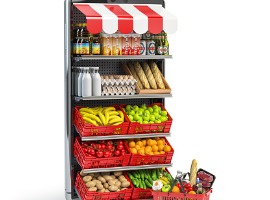
Creating a service bridge between consumers and their favorite specialty products, popular brands, and local grocers is a rewarding and challenging process. With the right online tools and website features, you’ll find many innovative solutions for any type of business model you need to make your grocery shopping and delivery business successful.
WorkWave offers a number of platforms for your desktop, web-based systems, and mobile apps to provide all the tools you need to connect with vendors, customers, suppliers, delivery drivers, and more. You’ll find many options to track delivery orders, coordinate curbside pickup hours, and review inventory and sales reports, among many other options.
In addition to providing access to all the management tools and systems to run and grow your business, WorkWave features many great options to optimize the systems that keep your operations running smoothly. Use our fuel-efficient tool to minimize the cost of gas for your delivery drivers and keep staff and shoppers apprised of new orders, upcoming route changes, and order modifications at all times.
Customer feedback surveys are another great way to establish solid relationships with new and existing customers while retaining their business for the long term. Create messages and email updates to keep regular customers and vendors informed of upcoming specials, discounts, product changes, and promotions effortlessly through our extensive system.
Summary
When you establish and grow your grocery shopping and delivery business, you’ll find many challenges and rewards as you develop your company. WorkWave offers many tools to customize your grocery delivery service, whether you’re designing a small and localized company to a specific region or intend to grow your company to include many suppliers and vendors.
You’ll find many great resources to manage your company’s daily operations and strategic goals while focusing on marketing and promoting your service to new and potential customers. Our online resources and tools allow for easier usability for all access levels so that you can grow your business at a lower cost and in a fraction of the time you expect to invest using more traditional methods.
Whether you keep your business model simple or expand your operations to multiple levels and regions for service, there are various ways to create seamless communication and operations through innovative software. WorkWave offers a wide range of solutions for any size of business to handle customer feedback surveys, establish sales targets, inventory tracking, and staff-related tools.
You’ll find everything you need with numerous tools and strategies to make business management more effortless than ever, with the opportunity to grow a successful business.

